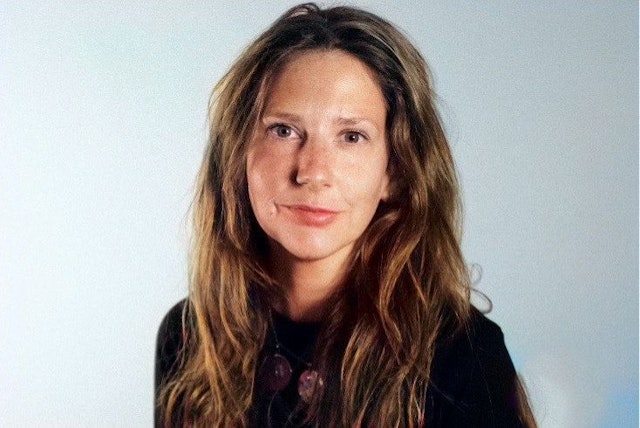Succession plans: how can agencies balance the needs of clients with staff ambitions?
Each week, The Drum asks agency experts from across the world and the ad business for their take on a tough question facing the industry, from topical concerns to perennial pain points.

How should agencies balance career progression and team resourcing? / The Drum
Businesses of all stripes strive to recruit brilliant people and put them in great teams. But even when your hiring strategy succeeds, it’s unlikely to stay set in stone for very long. Many staff want the chance to move on up eventually – a development that will eventually destabilize your excellent team and potentially deprive your clients of great service.
So, how do you manage those transitions? And how do you balance offering staff a long-term future, while providing adequate resources to each of your client teams?
How do you solve a problem like... succession?

James Denton-Clark, managing director, Accenture Song UK
Prince Harry has called his book Spare. I haven’t read it, but I can only imagine how it feels to be spare. A spare part. An understudy. Waiting in the wings in case the main act falls under a bus. Waiting for your chance to shine, secretly hoping you get your chance in the limelight. Maybe, you know, if I left that banana skin... never mind. The point, I think, is that succession planning’s ambition should never be to create a spare. Your successor should be better than you. Their successor should be better than them. Talent, client, business wins. As for you? Well, if you’re good enough to get that job, then you’ll certainly be good enough for the next one.
Richard Bradford, HR director, media, Dentsu International
The importance of talent-driven organizations cannot be overstated. Achieving the right mix of internal and external talent into the right role at the right time is a critical challenge for HR and business leaders. Getting this right ensures business continuity and employee engagement, and reduces turnover. Succession planning and having ongoing career conversations is key in unlocking the potential of our people and is an essential way of working. By identifying critical roles across the business, the key competencies needed now and in the future, alongside aligning high-potential talent against critical roles, enables employees to see their career path and keeps teams expertly resourced.
Advertisement
Bella Patel, global chief talent officer, FCB
Our people philosophy is built on growing and developing talent. Annually, our leaders discuss each individual and identify who should be considered for a rotation. As opportunities come up, we revisit those discussions to identify the individual who is ready for a new challenge. A transition plan is then created so we ensure a balance as they move off current assignments and onboard to a new team smoothly. It takes a lot of coordination, but it’s the right thing to do for our talent.
We believe our talent deserves new growth opportunities/challenges and we discuss individual development annually so we can plan for potential transitions. We prepare for these moves by ensuring members are cross-trained and consistent knowledge sharing happens within the team. Once an opportunity is finalized, we create a plan that balances the shift of current responsibilities while smoothly onboarding to the new assignment. Our client partners understand the value of career growth and are supportive of people moving on to new roles, even though they will be missed.

Daisy Domenghini, managing director EMEA, VaynerMedia
We’re passionate about helping employees at every level grow and we often leverage talent across our network, through promotions or relocations, to fill the gaps when someone leaves. We’ve recently moved some of our best people from London to Amsterdam, or Singapore to London. That way they can champion the culture and settle in quickly.
When recruiting new people I want to hire talent I can see replacing me one day. It’s equally important to encourage unique views and experiences. Those who open your eyes to different ways of working and challenge your perspective push you to become a better leader.
Ian Millner, chief executive officer, Cheil Connec+
The problem with succession is that it is generally seen as ‘replacement,’ and this tends to drive the topic underground. This often results, ironically, in people feeling stifled and frustrated. It should be looked at through the lens of ‘preparation,’ so that it can be an open discussion that is motivated and motivating, with clear timelines and development.
Succession is a workplace taboo and for many it’s a sign of weakness, creating a feeling of erosion of authority and status. In the era of the great resignation, never has the idea of working for a boss, more than you work for a company, been so relevant. Leadership is a dying art, and can really multiply the capabilities of talent, but people need to know what’s in it for them, where they are going and how long it’s going to take. The challenge with this is that most leaders are deeply uncomfortable about making themselves vulnerable.
Advertisement
Betsy Yamazaki, vice-president, talent acquisition, Manifest
Recruiting top talent and succession planning go hand in hand. We need to hire for great potential – we aren’t just filling a role, we’re growing businesses and we’re growing careers. It would be shortsighted to expect one person to stay in a role that doesn’t evolve, but when there’s career growth within the agency, it’s a win-win situation. There shouldn’t be destabilization of the team as employees move up, but rather an opportunity to add fresh talent. And there’s no better recruiting hook than telling candidates that the reason a position is open is because of an internal promotion.

Paula Joannou, chief people officer, Wunderman Thompson UK
When strategically considered, succession is more of an opportunity than a problem. We have some of the best people in the business, so working with them to help them take the next step, and the one after that, is something we take seriously. Along with what we call ‘Whole Person Development’ tools and initiatives – including a bi-annual performance review system, career architecture frameworks that encourage lateral as well as linear moves, an award-winning mentoring program and dedicated time every month for career development – we focus on communication to make sure we can provide them with the guidance and mentorship they need to step up when their leaders move on.
Katie Martin, senior vice-president, managing director, Big Village
Attracting great talent and growing them is obviously a critical foundation. However, timing and a little luck is everything the higher up the ‘ladder’ you go. The right person in the right role at the right time to succeed someone perfectly is a rare alignment of the stars. We’re all in a chain, and every move creates an opportunity for someone else, so provided you always put the individual’s career first – and consistently hire superstars – the succession ecosystem should take care of itself (ish). The key is not holding people back for fear of business and client disruption.
Suggested newsletters for you
Garrett Garcia, president, PPK
It boils down to finding harmony between honoring commitments to your deserving staff who are committed to the company over the long haul, while also being honest and transparent with new clients and new hires as to the long-term plans for the agency and its people. Creating clear roadmaps and milestones for current staff help leadership carve out and protect roles for junior employees as they move up the ranks, while sometimes creating new roles that strategically open up space for gifted outside talent to help maintain balance.

Jacques Burger, group chief executive officer, M&C Saatchi Group South Africa
Succession planning is linked to your growth strategy for your team members. However, moving up the ladder is only one aspect. Growth doesn’t necessarily mean ‘being more senior.’
Our group has removed this triangular structure with one senior role, with a partner model that ensures senior people work alongside each other. This opens multiple succession and growth opportunities – a culture where people believe they can commit to a long-term journey.
But you must be intentional about creating growth outside of succession through training, exposure to diversified skill sets and different responsibilities underpinned by learning and holistic sideways growth.
Anton Jerges, chief executive officer, We Are Collider
People move on. Fact. Controlled and managed staff turnover is a natural part of business evolution. Ensure you’re always looking for emerging talent, rather than waiting for someone to leave before looking for their successor. Offering the right culture and incentives – such as EMI share schemes or even EOTs (Employee Ownership Trusts) – helps. But we also need to be mindful of attractive schemes retaining the wrong staff. So nurture curiosity and support the team as they develop. The right culture and environment will foster longevity of service from the people you want to keep.
Scott Harkey, chief executive and co-founder, OH Partners
The more you can articulate a career path within an agency, the more clarity your employees have. It’s tempting not to mess with efficient team dynamics, but experience has taught me that people in our business need to be stimulated. Things will get stagnant if people aren’t given a variety of work and a chance to evolve. Additionally, clients hire agencies for diversity of talent and thought. Exposing them to the same team would deprive them of that diversity. Success shouldn’t be contingent on one person – ultimately, it’s a team sport.
Dipti Shah, chief people officer, Ustwo
At Ustwo, our superpower is the collective talent and collaboration we foster. Growth and transition are managed by our development frameworks. As people develop, opportunities appear for others, so our teams remain stable. We’ve enabled people to move from one discipline to another where they’ve shown interest and potential, giving themselves a fresh career outlook and long-term future with us.
Being employee-owned, we encourage entrepreneurship. We know we are a part of someone’s professional journey. We don’t trap employees. We promote growth and development through human experience, with Ustwo or elsewhere.
Want to join in with our weekly discussions? Email me at sam.bradley@thedrum.com.

